Kirby Larson's Blog, page 36
March 26, 2013
Teacher Tuesday
I haven't kept careful tabs on where all of my wonderful interviewees for this feature have been from, but I think today's guest is the first one to represent a truly urban school. I am so grateful for Sylvie Shaffer for sharing her unique perspective today. Sylvie is in her fourth year as school librarian at the Parkside Campus of the Cesar Chavez Public Charter School for Public Policy, located in northeast D.C., in what Sylvie describes as "an isolate urban neighborhood." She works with about 730 students, grades 6 through 12.
By now you know the drill! We're going to start with a peek at Sylvie's past.
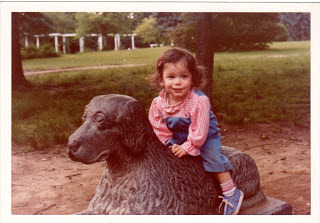
Favorite school lunch as a kid: I brown-bagged it most days: pb&j on whole wheat bread, a fruit rollup, juicebox, and some carrotsticks. (boring, I know- sorry!) Best friend in grade school: Jennifer L and I were inseparable in elementary school- I loved reconnecting with her over social media a few years back and saw her for the first time in over a dozen years earlier this fall. We laughed at how much we hadn’t changed! Times you were the new kid in school: I was the new kid five times. It was always hard, but the most challenging time was a mid-school year switch from a small private school in the suburbs to a larger inner city school. It’s been almost thirty years, but I still remember how scared I was. The day I was supposed to switch turned out to be a snow day and I felt such relief that I got one more day to psych myself up for the change. Teacher that inspired you to stretch: Reference librarian extraordinaire, Barb Wurtzel my community college professor, and current dean of library services at Springfield Technical Community College, was and continues to be a huge influence over my life and career path. I started community college after some time away from school and my lack of confidence was as big a challenge to overcome as my lack of research skills- I gained both in her honors research class and her approach to teaching: heavy on patience, encouragement, and allowing students to explore research topics that interest them, shape my interactions with my middle and high school students today, over a dozen years later. The one thing you always wished you could do in grade school but never achieved: This seems so silly (and dangerous!) now, but at the time it was a really big deal: there were some benches around the perimeter of the playground, and the cool thing to do at recess was to leap from bench to bench all they way around the playground. I’ve always been short, with short legs, so although I was pretty flexible and wiry through elementary school and could turn perfect cartwheels, the leaping from bench to bench thing just wasn’t happening for me. I remember trying to practice in secret after school once, in the hopes that I could dazzle my classmates at lunch the next day, missing by several inches, and scraping the heck out of both knees and palms. Ouch!
We're glad you survived the bench jumping, Sylvie, because you are making such a difference in connecting kids and books. You work with a population of urban youth, many of them in poverty. How do you see this harsh fact of life impacting your students’ experiences with books and reading?
As we all do every time we read, my kids bring to each book their own set of life experiences, or lack thereof. Reading through the lenses of poverty and urban life presents challenges at times - not getting mainstream cultural references, lacking vocabulary, or not being able to identify with the experiences they’re reading about can prevent kids from engaging with books. It’s also sometimes the case that my students don’t see reading modeled outside of school, or may have responsibilities (childcare- their own kids or siblings/relatives, afterschool jobs) which can make it harder for them to carve out time to read.
Do you have one particular goal or guiding principle you strive for? What is it?
The right book for the right reader at the right time.
How can/do you support your students at school to make reading a higher priority?
By putting books that they want to read in their hands- it’s challenging to get kids to “prioritize reading”- much easier to find a book that grabs them from the first pages, gives them that sense of urgency to find out what happens next in the story.
You bragged about your students, saying they are “absolutely amazing.” Please, tell us about the ways in which they are amazing and how they inspire you.
One of the ways in which my kids never cease to amaze me is their ability to really grapple with big ideas about public policy and equality, and to speak up for themselves both as individuals and collectively. I’m especially proud of my high school debate team and of all my seniors each year as they present their senior theses on a public policy topic they’ve researched over their senior year. Watching them cross the stage to get their diplomas each spring makes me cry, especially knowing that not only will most of them be the first in their families to go to college, a great number of their parents didn’t graduate high school.
Have you used technology to boost access to books and their creators? If so, which ones and how?
I’ve connected with the amazing An Open Book Foundation via Twitter and Facebook, which has led to my hosting some incredible authors this year, including Ruta Sepetys, Maureen Johnson, Matt de la Pena and Gigi Amateau. I am also looking forward to an exciting collaboration with Kurtis Scaletta next fall, coinciding with the release of his forthcoming book, The Winter of the Robots. A group of my middle schoolers who will be competing in the First Lego League Robotics Challenge will read the book and do a skype visit with Kurtis. I am so grateful when authors are open to projects like this and Twitter makes it possible to explore opportunities like this one.
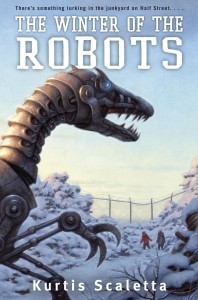
How do your students’ needs and interests impact the way you add to your collection?
Finding that sweet spot where need meets interest can be tough, especially considering so many of our kids are reading several grade levels behind. I definitely stock lots of hi/lo (high interest/low reading level) books, like those from Saddleback, Lerner and Orca, as well as books by authors with reluctant reader appeal, especially those featuring an urban setting- Coe Booth, Walter Dean Myers, Sharon Draper, Sharon Flake, Paul Volponi, Janet McDonald, Matt de la Pena...a lot of my kids are drawn to funny stuff, too, like Tom Angleburger, Dave Lubar, and of course graphic novels and graphic hybrids are huge with my students as well- Diary of a Wimpy Kid, Dork Diaries etc. Oooh, and short stories- The Guys Read collections are very popular, even with some girls.
What has most surprised you about the books your students passionately strongly connect with?
I can’t really say I’m ever surprised when kids connect with books, delighted, yes, surprised, not really. I do especially love it when a kid falls hard for a title I’ve loved (or hated!) and we’re able to engage in conversation about it. Actually, I would say the inverse of your question happens more often: a kid will be surprised that I’ve read and loved a book they connected with.
How do you work with a kid for whom pleasure reading is a hard sell?
My approach is to try to identify what the obstacles to pleasure reading might be (often there are more than one in play) and work from there. It may be the case that reading doesn’t come easily and we need to find a book with a simpler vocabulary and/or storyline to make reading less frustrating and more fun. Or, it could be that the kid is a fine reader but just hasn’t yet experienced getting lost in a book. When that’s the case, I walk the stacks with them and ask lots of questions to get a sense of their interests- what are some of their favorite movies and tv shows, what sports do they like to watch or play, that kind of thing. Also, I’ve found that narrative nonfiction, especially biographies and memoirs, can be the magical gateway to pleasure reading. I booktalk a ton, across many genres, and don’t let anyone leave my library empty-handed.
What do you see as your most important role as a book advocate?
To be really public about my reading- engage students, teachers and administrators in frequent conversations about books...share what I’m reading, and make suggestions for what they might enjoy reading next.
How might the book community (publishers, editors, authors, illustrators) support you more?
There’s a huge need for more high-quality books featuring tweens and teens of color and/or set in the inner city but that aren’t “urban issue books.” Although I get a ton of requests for books about gangs, drugs, teen pregnancy, and life in the projects, it’s both disappointing and problematic that nearly all the books available that feature kids who look like and share daily experiences with my students are almost exclusively ones that portray kids of color as living lives fraught with extreme and stereotypical challenges. Where are the books about inner city black kids who aren’t involved with gangs and drugs? It would be great for my kids to see themselves represented in a more positive and more mainstream way, but without being super-didactic or having religious overtones.
Do you think a connection with books makes an even bigger difference for students who may struggle in their personal lives? If so, can you speak to that?
Absolutely. Kids who may not be ready, willing, or able to talk about serious issues like rape, drugs, poverty, pregnancy, gangs, mental illness, sexuality and sexual identity can process by reading fiction that tackle these themes, as well as find accurate, non-biased information in nonfiction texts about tough issues. Some students also find comfort in the escape provided by reading about entirely different challenges than the ones they’re experiencing can provide- my fantasy readers, especially. And of course, there’s also so many wonderful books that don’t necessarily tackle such heavy issues, but more universal tween and teen troubles- sibling issues, first crushes etc. It can be so validating to read about characters going through the same stuff you are. I wrote a guest post for The Nerdy Book Club about this very question a while back. You can read it here, if you’d like.
What are your library’s biggest needs?
We desperately need to update the current computers and add a laptop cart. Currently, we have only 12 outdated desktops - students need to double and often triple up to do research or type. What’s worse, most of them don’t have computers or Internet access at home, so it’s important that they have ready access to computers at school, to get them college and career ready. (I asked Sylvie for more details about the dollars needed to meet this big need and she shared this info from a grant proposal she put together last year: Cost of empty cart- $2,150, which would allow more students to use computers within the library, while seated at the six already existing tables, and it will also allow librarian-led, technology-enhanced learning throughout the school building. 25 Laptops- $14,150. ID theft plates- $375, each laptop must be equipped with an ID Theft plate and the accompanying free software to secure against theft. Currently, 12 Wireless Access Points service the campus. In order to support additional computers and maintain the wireless infrastructure, 8 additional wireless access points will need to be added at a cost of $800 each. )
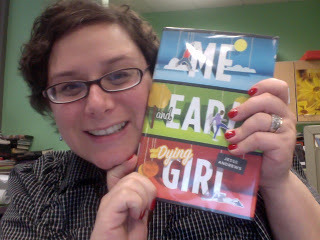 Look at this happy librarian face! We need to find her -- and her school! -- a fairy godmother.
Look at this happy librarian face! We need to find her -- and her school! -- a fairy godmother.What do you wish I’d asked you that I neglected to ask?
I wish you’d asked “What are you currently reading?”, so I could talk up Tanya Lee Stone’s latest, Courage Has No Color: The True Story of the Triple Nickles: America's First Black Paratroopers.
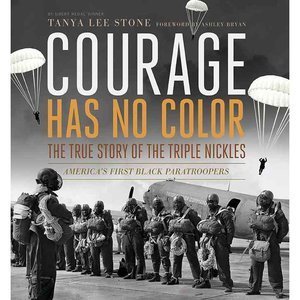
It’s absolutely fascinating- the writing is so crisp and engaging and the photographs add an additional layer of interest. I couldn’t help myself from starting to read it when my library’s copy came in a Junior Library Guild delivery, and a kid caught me reading at my desk (when I should have been processing it!) and as excited as I was that he demanded I process it on the spot so he could check it out, I was disappointed that I couldn’t take it home that night myself! Luckily, my local public library had a copy available.
I'm sure you were sorry you couldn't take that book home but that disappointment was FAR outweighed by the pleasure of knowing you'd gotten a kid hooked on a book! Sylvie, I so appreciate your insights and I'm confident anyone reading this today is grateful for you, too.
Want to hear more of Sylvie's thoughts on connecting kids and books? Follow her on Twitter: @sylvie_shaffer
Published on March 26, 2013 06:30
March 22, 2013
Friend Friday
I wish I knew Jerry Spinelli well enough to call him a friend; I've met him once -- does that count? I fell in love with his books beginning with Maniac Magee; some of his characters, like Stargirl, have permanent spots in my heart.
By the time this post goes live, I'm hoping to have read his newest:

School Library Journal gave it a star, with this comment: “This unforgettable coming-of-age story will resonate with tween readers and take its rightful place beside the author’s Maniac Magee and Louis Sachar’s Holes.”
The cover is as evocative as the publisher's description:
Welcome to Hokey Pokey. A place and a time, when childhood is at its best: games to play, bikes to ride, experiences to be had. There are no adults in Hokey Pokey, just kids, and the laws governing Hokey Pokey are simple and finite. But when one of the biggest kids, Jack, has his beloved bike stolen—and by a girl, no less—his entire world, and the world of Hokey Pokey, turns to chaos. Without his bike, Jack feels like everything has started to go wrong. He feels different, not like himself, and he knows something is about to change. And even more troubling he alone hears a faint train whistle. But that's impossible: every kid knows there no trains in Hokey Pokey, only tracks.
Master storyteller Jerry Spinelli has written a dizzingly inventive fable of growing up and letting go, of leaving childhood and its imagination play behind for the more dazzling adventures of adolescence, and of learning to accept not only the sunny part of day, but the unwelcome arrival of night, as well.
Sounds like a can't miss, to me!
By the time this post goes live, I'm hoping to have read his newest:

School Library Journal gave it a star, with this comment: “This unforgettable coming-of-age story will resonate with tween readers and take its rightful place beside the author’s Maniac Magee and Louis Sachar’s Holes.”
The cover is as evocative as the publisher's description:
Welcome to Hokey Pokey. A place and a time, when childhood is at its best: games to play, bikes to ride, experiences to be had. There are no adults in Hokey Pokey, just kids, and the laws governing Hokey Pokey are simple and finite. But when one of the biggest kids, Jack, has his beloved bike stolen—and by a girl, no less—his entire world, and the world of Hokey Pokey, turns to chaos. Without his bike, Jack feels like everything has started to go wrong. He feels different, not like himself, and he knows something is about to change. And even more troubling he alone hears a faint train whistle. But that's impossible: every kid knows there no trains in Hokey Pokey, only tracks.
Master storyteller Jerry Spinelli has written a dizzingly inventive fable of growing up and letting go, of leaving childhood and its imagination play behind for the more dazzling adventures of adolescence, and of learning to accept not only the sunny part of day, but the unwelcome arrival of night, as well.
Sounds like a can't miss, to me!
Published on March 22, 2013 07:00
March 21, 2013
Thursday's Thought
“Fantasy is hardly an escape from reality. It's a way of understanding it.”
Lloyd Alexander
Lloyd Alexander
Published on March 21, 2013 07:00
March 19, 2013
Teacher Tuesday
Allow me to introduce Cindy Minnich, another teacher friend from the Twitterverse. Cindy teaches at Upper Dauphin Area High School, Elizabethville, PA, working with 9th and 12th graders. She's passionate about rekindling the love of reading in her high schoolers -- wait till you hear what she has to say. But, first, we'll take a peek at her past:
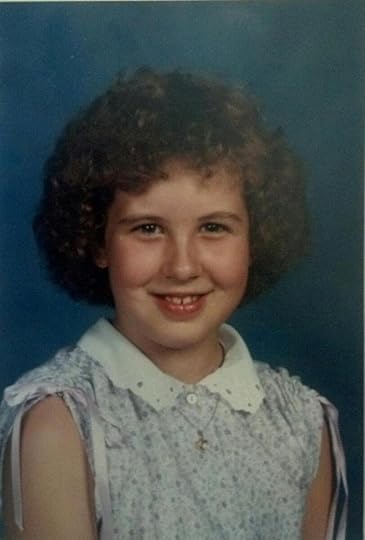 Cindy in fourth grade - before braces and glasses
Favorite school lunch as a kid: beef turnovers
Best friend in grade school: Dyanna
Times you were the new kid in school: My sophomore year of high school
Teacher that inspired you to stretch:
Dr. Dearbaum in second grade - I wanted so much to do better every day for her because she saw promise in me that I didn’t know was there.
Mrs. Parnell in high school - I appreciated her patience and encouragement as a student and have worked hard to emulate it as a teacher.
The one thing you always wished you could do in grade school but never achieved
I could never manage to get braids or pigtails or barrettes to stay in. Or perms for that matter. My hair was destined to be stick straight. (It doesn’t seem all that important right now, but it drove me nuts back then...)
Cindy in fourth grade - before braces and glasses
Favorite school lunch as a kid: beef turnovers
Best friend in grade school: Dyanna
Times you were the new kid in school: My sophomore year of high school
Teacher that inspired you to stretch:
Dr. Dearbaum in second grade - I wanted so much to do better every day for her because she saw promise in me that I didn’t know was there.
Mrs. Parnell in high school - I appreciated her patience and encouragement as a student and have worked hard to emulate it as a teacher.
The one thing you always wished you could do in grade school but never achieved
I could never manage to get braids or pigtails or barrettes to stay in. Or perms for that matter. My hair was destined to be stick straight. (It doesn’t seem all that important right now, but it drove me nuts back then...)
Now, let's talk about connecting kids and books. Cindy, you are one of the few high school teachers I’ve interviewed and you said you were concerned that some of your ninth graders come to you and they haven’t read a book for fun in years. Why do you think that happens?
While it seems less important for me as my goal is to give their reading lives a jump start and get them thriving as readers, I realize that this is important information for the teachers and parents of students who aren’t to this point yet. Many of my students report being busier - more activities translates into less time to read. Buckling down on school work with more difficult classes and less study hall time also translates to less time to read. Other students said they just didn’t know about books that were out there that they would like to read. Several mentioned the distractions of social media and texting and hanging out with friends as reasons why they were not reading much once they hit seventh or eighth grades.
You told me you feel strongly about “feeding the desire to read.” What are some of the strategies you use to do this with your high schoolers?
If I was writing this without any outside help from my students my answer would simply be this: I read, I share what I’m reading, I booktalk, and I do my best to hook my students up with books they will like.
What made me smile is that they told me this isn’t everything I do. Here’s the rest of it in their words:
* You read aloud from the best parts of books to make us want to read them.
* You make sure there are books everywhere.
* You ask us questions about what we like so you can give us the right book.
* You ask us about the books we’re reading and talk to us about them.
What kinds of outside resources, if any, do you use to encourage your high schoolers to read for pleasure (Skype, author websites, guest speakers)?
I share book trailers (both in class and in online class spaces) and information from meeting authors or interacting with them on Twitter. I share blog posts and I have had authors Skype with my classes. I was blessed to have Gae Polisner agree to come to my school and spend the day with my students. Sharing information about what new books are coming out and (bonus!) being able to share ARCs with them are huge as well.
How do you figure out which book to connect with which student?
I start by asking them about the best book they’ve ever read. Then their favorite movies and TV shows. I ask them what they are in the mood for reading. Their answers and reactions to the books I pull off the shelves for them are often enough to give me a good idea of what books might work. But I only have the books I know and am familiar with to make selections from so I really need to be reading and know what’s available.
Can you share an anecdote (or two!) of a successful connection?
Most of my book stories start with me asking students questions back by the bookshelves in my classroom. The details are not necessarily as important as the outcomes.
One conversation with an honors student who had been a reader (though had found that she wasn’t reading much lately) absolutely fell in love with books again after getting to read the Statistical Probability of Love at First Sight.
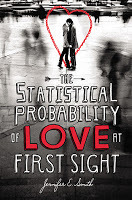
Another who decided to take the plunge and see what I might be able to offer him to read picked up Leviathan, read the entire series, finished the Gone series after that.
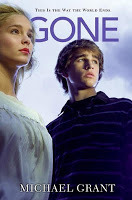
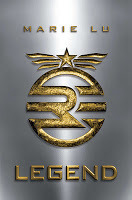
He came to me one afternoon from study hall and asked me for another book series to start. He was so sincere when he told me how surprised he was to be reading. I’ve lost track of how many books he’s gone through now, but he just left for a three day weekend with Legend.
Gae Polisner was moved to tears when another student told her on her visit that hers (The Pull of Gravity) was the first book he’d ever wanted to read. He hasn’t looked back.
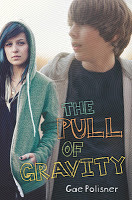
How do you show your students your own love of reading?
I think the most obvious thing I do is to talk about my reading life. They see me reading. They hear about talk me reading. I have books stacked everywhere. They know that the first question they will probably hear from me when I see them in the hallway is, “How are you?” - but the second is nearly always, “What have you been reading lately?” I’m predictable.
You’ve shared some ways you’ve addressed this problem. Do you have some ideas about what schools could do to address this diminished desire for recreational reading? What are those ideas?
There are a few things that can be done that don’t really take much time or money to implement. While it’s important for the English teachers and librarians to be well-read and for them to be making book recommendations, it is equally as important for other subject area teachers to be sharing their book recommendations. Share a page or two from a book or magazine article that is relevant to what you’re studying. Give booktalks on books that relate to the ideas and events you’re studying. Share your reading lives with your students. None of it has to take all that long - a book talk here and there might only take up a couple of minutes of class time, but you’d be surprised how many students take note and seek out the books we bless.
Two other things work: building time into the day for recreational reading and making sure that students are surrounded by a wide variety of easily accessible and interesting reading materials. I know what these do for the students who spend time in my room, but I often fantasize about what would happen if this was the priority of the entire school. What if each room had its own classroom library of magazines, newspapers, and books? What if time was made in the daily school schedule for recreational reading for everyone - from students to teachers to support staff? You’d have a whole building full of reading mentors and far more time for students to fall in love with their books. It might sound expensive to get all of those reading materials, but it doesn’t have to be. Think of how many newspapers and magazines went off to be recycled. Additionally, books can be picked up cheaply at library book sales and teachers can sign up for programs like ARCs Float On or for donations to be made for projects on sites like Donors Choose.
Why do you think it’s important for high schoolers to be reading, outside their coursework?
Recreational reading is one of the most enjoyable pastimes I can imagine. It opens up the worlds of a zillion different possibilities and perspectives to us as we turn the pages. Administrators and parents love to hear that those students who are readers tend to do better academically - they are better readers, writers, and have larger vocabularies than non readers.
What are some titles that have nudged some non-readers into being readers?
Besides the ones listed above:
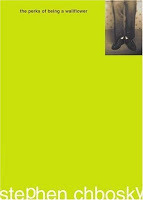
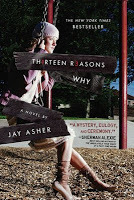
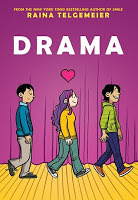
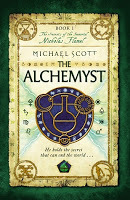
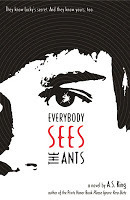

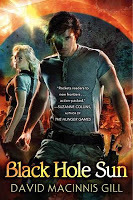
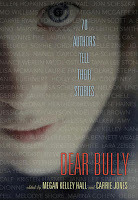
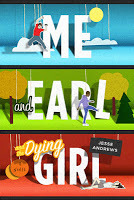
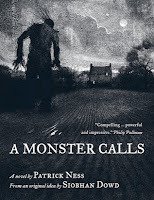
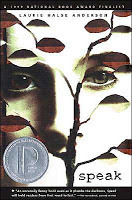
The Alchemyst; 13 Reasons Why; Speak; Drama; Dear Bully; Me and Earl and the Dying Girl; A Monster Calls; Carter Finally Gets It; Everybody Sees the Ants; The Perks of BEing a Wallflower; and Black Hole Sun.
Thank you, Cindy. I had never heard of Donors Choose-- you can bet I'm going to check it out! Thank you, too, for this great reflection on getting books into the hands (and hearts!) of high schoolers.
Read Cindy's blog or follow her on Twitter, @cbethm
 Cindy in fourth grade - before braces and glasses
Favorite school lunch as a kid: beef turnovers
Best friend in grade school: Dyanna
Times you were the new kid in school: My sophomore year of high school
Teacher that inspired you to stretch:
Dr. Dearbaum in second grade - I wanted so much to do better every day for her because she saw promise in me that I didn’t know was there.
Mrs. Parnell in high school - I appreciated her patience and encouragement as a student and have worked hard to emulate it as a teacher.
The one thing you always wished you could do in grade school but never achieved
I could never manage to get braids or pigtails or barrettes to stay in. Or perms for that matter. My hair was destined to be stick straight. (It doesn’t seem all that important right now, but it drove me nuts back then...)
Cindy in fourth grade - before braces and glasses
Favorite school lunch as a kid: beef turnovers
Best friend in grade school: Dyanna
Times you were the new kid in school: My sophomore year of high school
Teacher that inspired you to stretch:
Dr. Dearbaum in second grade - I wanted so much to do better every day for her because she saw promise in me that I didn’t know was there.
Mrs. Parnell in high school - I appreciated her patience and encouragement as a student and have worked hard to emulate it as a teacher.
The one thing you always wished you could do in grade school but never achieved
I could never manage to get braids or pigtails or barrettes to stay in. Or perms for that matter. My hair was destined to be stick straight. (It doesn’t seem all that important right now, but it drove me nuts back then...)
Now, let's talk about connecting kids and books. Cindy, you are one of the few high school teachers I’ve interviewed and you said you were concerned that some of your ninth graders come to you and they haven’t read a book for fun in years. Why do you think that happens?
While it seems less important for me as my goal is to give their reading lives a jump start and get them thriving as readers, I realize that this is important information for the teachers and parents of students who aren’t to this point yet. Many of my students report being busier - more activities translates into less time to read. Buckling down on school work with more difficult classes and less study hall time also translates to less time to read. Other students said they just didn’t know about books that were out there that they would like to read. Several mentioned the distractions of social media and texting and hanging out with friends as reasons why they were not reading much once they hit seventh or eighth grades.
You told me you feel strongly about “feeding the desire to read.” What are some of the strategies you use to do this with your high schoolers?
If I was writing this without any outside help from my students my answer would simply be this: I read, I share what I’m reading, I booktalk, and I do my best to hook my students up with books they will like.
What made me smile is that they told me this isn’t everything I do. Here’s the rest of it in their words:
* You read aloud from the best parts of books to make us want to read them.
* You make sure there are books everywhere.
* You ask us questions about what we like so you can give us the right book.
* You ask us about the books we’re reading and talk to us about them.
What kinds of outside resources, if any, do you use to encourage your high schoolers to read for pleasure (Skype, author websites, guest speakers)?
I share book trailers (both in class and in online class spaces) and information from meeting authors or interacting with them on Twitter. I share blog posts and I have had authors Skype with my classes. I was blessed to have Gae Polisner agree to come to my school and spend the day with my students. Sharing information about what new books are coming out and (bonus!) being able to share ARCs with them are huge as well.
How do you figure out which book to connect with which student?
I start by asking them about the best book they’ve ever read. Then their favorite movies and TV shows. I ask them what they are in the mood for reading. Their answers and reactions to the books I pull off the shelves for them are often enough to give me a good idea of what books might work. But I only have the books I know and am familiar with to make selections from so I really need to be reading and know what’s available.
Can you share an anecdote (or two!) of a successful connection?
Most of my book stories start with me asking students questions back by the bookshelves in my classroom. The details are not necessarily as important as the outcomes.
One conversation with an honors student who had been a reader (though had found that she wasn’t reading much lately) absolutely fell in love with books again after getting to read the Statistical Probability of Love at First Sight.

Another who decided to take the plunge and see what I might be able to offer him to read picked up Leviathan, read the entire series, finished the Gone series after that.


He came to me one afternoon from study hall and asked me for another book series to start. He was so sincere when he told me how surprised he was to be reading. I’ve lost track of how many books he’s gone through now, but he just left for a three day weekend with Legend.
Gae Polisner was moved to tears when another student told her on her visit that hers (The Pull of Gravity) was the first book he’d ever wanted to read. He hasn’t looked back.

How do you show your students your own love of reading?
I think the most obvious thing I do is to talk about my reading life. They see me reading. They hear about talk me reading. I have books stacked everywhere. They know that the first question they will probably hear from me when I see them in the hallway is, “How are you?” - but the second is nearly always, “What have you been reading lately?” I’m predictable.
You’ve shared some ways you’ve addressed this problem. Do you have some ideas about what schools could do to address this diminished desire for recreational reading? What are those ideas?
There are a few things that can be done that don’t really take much time or money to implement. While it’s important for the English teachers and librarians to be well-read and for them to be making book recommendations, it is equally as important for other subject area teachers to be sharing their book recommendations. Share a page or two from a book or magazine article that is relevant to what you’re studying. Give booktalks on books that relate to the ideas and events you’re studying. Share your reading lives with your students. None of it has to take all that long - a book talk here and there might only take up a couple of minutes of class time, but you’d be surprised how many students take note and seek out the books we bless.
Two other things work: building time into the day for recreational reading and making sure that students are surrounded by a wide variety of easily accessible and interesting reading materials. I know what these do for the students who spend time in my room, but I often fantasize about what would happen if this was the priority of the entire school. What if each room had its own classroom library of magazines, newspapers, and books? What if time was made in the daily school schedule for recreational reading for everyone - from students to teachers to support staff? You’d have a whole building full of reading mentors and far more time for students to fall in love with their books. It might sound expensive to get all of those reading materials, but it doesn’t have to be. Think of how many newspapers and magazines went off to be recycled. Additionally, books can be picked up cheaply at library book sales and teachers can sign up for programs like ARCs Float On or for donations to be made for projects on sites like Donors Choose.
Why do you think it’s important for high schoolers to be reading, outside their coursework?
Recreational reading is one of the most enjoyable pastimes I can imagine. It opens up the worlds of a zillion different possibilities and perspectives to us as we turn the pages. Administrators and parents love to hear that those students who are readers tend to do better academically - they are better readers, writers, and have larger vocabularies than non readers.
What are some titles that have nudged some non-readers into being readers?
Besides the ones listed above:











The Alchemyst; 13 Reasons Why; Speak; Drama; Dear Bully; Me and Earl and the Dying Girl; A Monster Calls; Carter Finally Gets It; Everybody Sees the Ants; The Perks of BEing a Wallflower; and Black Hole Sun.
Thank you, Cindy. I had never heard of Donors Choose-- you can bet I'm going to check it out! Thank you, too, for this great reflection on getting books into the hands (and hearts!) of high schoolers.
Read Cindy's blog or follow her on Twitter, @cbethm
Published on March 19, 2013 06:30
March 15, 2013
Friend Friday
I haven't read Clare Vanderpool's newest yet, but it sure sounds like it's right up my alley:
(publisher's description): At the end of World War II, Jack Baker, a landlocked Kansas boy, is suddenly uprooted after his mother's death and placed in a boy's boarding school in Maine. There, Jack encounters Early Auden, the strangest of boys, who reads the number pi as a story and collects clippings about the sightings of a great black bear in the nearby mountains. Newcomer Jack feels lost yet can't help being drawn to Early, who won't believe what everyone accepts to be the truth about the Great Appalachian Bear, Timber Rattlesnakes, and the legendary school hero known as The Fish, who never returned from the war. When the boys find themselves unexpectedly alone at school, they embark on a quest on the Appalachian Trail in search of the great black bear. But what they are searching for is sometimes different from what they find. They will meet truly strange characters, each of whom figures into the pi story Early weaves as they travel, while discovering things they never realized about themselves and others in their lives.
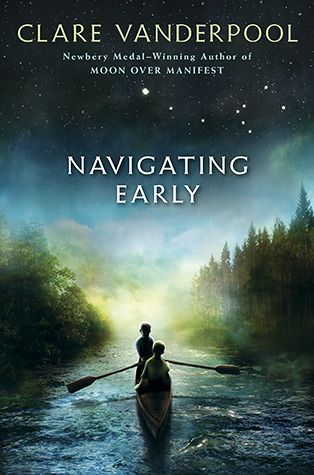
It's been out a few weeks so your local indie bookstore is sure to have it!
(publisher's description): At the end of World War II, Jack Baker, a landlocked Kansas boy, is suddenly uprooted after his mother's death and placed in a boy's boarding school in Maine. There, Jack encounters Early Auden, the strangest of boys, who reads the number pi as a story and collects clippings about the sightings of a great black bear in the nearby mountains. Newcomer Jack feels lost yet can't help being drawn to Early, who won't believe what everyone accepts to be the truth about the Great Appalachian Bear, Timber Rattlesnakes, and the legendary school hero known as The Fish, who never returned from the war. When the boys find themselves unexpectedly alone at school, they embark on a quest on the Appalachian Trail in search of the great black bear. But what they are searching for is sometimes different from what they find. They will meet truly strange characters, each of whom figures into the pi story Early weaves as they travel, while discovering things they never realized about themselves and others in their lives.

It's been out a few weeks so your local indie bookstore is sure to have it!
Published on March 15, 2013 07:00
March 14, 2013
Thursday's Thought
“You have to write the book that wants to be written. And if the book will be too difficult for grown-ups, then you write it for children.”
Madeleine L'Engle
Madeleine L'Engle
Published on March 14, 2013 07:00
March 12, 2013
Teacher Tuesday
We've heard so many creative ideas for connecting kids and books this year here at Teacher Tuesday, and today's is especially tasty! It comes to us from Alyson Beecher, who actually serves as an administrator in the Pasadena (California) Unified School District. A former principal, her focus is elementary literacy and providing professional development support to school librarians. She is particularly involved with Madison, Cleveland and Jackson Elementary schools.
Let's peek at Alyson's past:
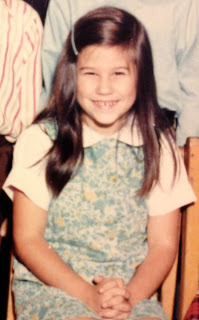
Favorite school lunch as a kid: Pizza! I still love pizza, but have become much more fussy about the type of pizza now.Times you were the new kid in school: My family moved the summer before 2nd grade and as a result, I got to be the new kid in a class that had been together since kindergarten. It wasn’t easy trying to break into the friendship groups that had already formed. In small towns, your status as the “new” kid can last a really long time, and it wasn’t until Junior High that I finally stopped feeling like the outsider.Teacher who inspired you to stretch: In high school, I had the same English teacher twice. Mr. H. was someone who kept challenging me to read more complex novels and to write more. One summer, I asked him for a list of titles to read and read dozens of assigned books just for the fun of it. As a result, I always felt that my college English teachers fell short of the standard set by my high school English teacher.
Alyson, you shared with me that one of your biggest passions is the Literacy Café program that you started with a parent a few years ago. Where did the idea for this program come from?
Sometimes the best ideas come during the most surprising moments. Three years ago, the school I was at was facing the possibility of closure. While we sat in numerous meetings that would determine the fate of the school, a parent and I started chatting about our love of books. We also started brainstorming ideas for sharing books with children. She had heard of an idea for Literacy Cafés from when she was a teacher. Of course, we tweaked the concept and made it our own and the Literacy Café program was born. (Read an article about it here.)
Why do you think such a program is so important?
When we started the Literacy Café, we weren’t really sure how it would work and if the students would respond the way we hoped they would. We wanted an experience that would bring books alive for children and help them become excited about reading.
What are the gains you see for students?
Every classroom is made up of diverse learners. Students in urban school settings often face greater challenges. By making learning hands-on and engaging, students relate better and tune in more. The Literacy Café appeals to a wide range of learners. Teachers can easily differentiate activities. Every student will find something that they can connect with during a Café whether it is a writing exercise or an art project or something related to observation and investigation. Students help one another complete projects and comprehension increases as does oral language skills. And, everyone has fun in the process.
What are the benefits that you see for the entire school community?
When we created the Literacy Café, it became the one thing that brought us together the most effectively as a reading community. We had been trying to develop into a school-wide reading community for a couple of years. However, the attempts we tried were only getting us so far. The Literacy Café gave us shared experiences to talk about and involved students, teachers, parents, and in some cases even authors and illustrators. It jelled us together and gave us our identify as readers.
What is involved in preparing for a Literacy Café?
One of the biggest parts in preparing for the Literacy Café is finding the right book and making sure that children have been exposed to it. A novel will take longer to share with students than a picture book. Next, we need to identify what themes we want to focus on and create the activities. From there, everything kind of comes together.
Have you found that particular titles or genres work best?
The nice thing about Literacy Cafés is that you can use any book or theme to create a Café. You are really just limited by your own vision and creativity.
Can you please share about one Literacy Café, in detail?
I have loved so many of the Cafés that we have done but probably my favorite was the Harlem Renaissance Café. Despite the amount of time it took to plan and prep for that café, I felt that it truly captured everything we wanted for children and learning and exposed them to a rich part of history. Hereis a link to a blog post I did about it.
What has been the biggest surprise/joy of doing Literacy Cafes?
Literacy Cafés reminded me of how much I love teaching and how many children really love books. Young children love looking at picture books and having someone read aloud to them. However, many children lose some of that excitement, as books become more challenging for them. The Café makes stories accessible for children and allow them to interact with the text and with one another. Sharing food, working together, and digging into the ideas behind a story bring smiles to the faces of children, which most certainly made me smile.
If a parent, teacher or librarian wanted to start a Literacy Café at his/her school, what first steps would you recommend?
Start small and start with a book that inspires you. When I read certain books, I just know that I have to share them with students. If I am super excited about the book, then it will be easier to think about ideas and activities. In my Nerdy Book Club post on Literacy Cafés, I shared 10 steps for running a café.
It is clear that you are completely committed to creating community around books, so much so that you founded a grassroots organization called Bridge to Books. Why did you take such a leap?
A friend, Alethea, and I were at a book event and started chatting. She was a bookseller at the time and I was a principal. I teased her that booksellers and librarians had all of the “good stuff” when it came to books (swag, Advanced Reader Copies, teacher guides) and yet, educators were teaching reading to children and had them 6 hours a day and didn’t know about any of these resources. We started thinking about ways to connect teachers, librarians, booksellers, publishers, and authors/illustrators to provide literacy events for children and teens.
Links to some of our recent events can be found here and here:
What has most surprised you about this investment of your time and resources?
When we did our first event, we were wondering if anyone would show up. We were surprised that there were so many authors who wanted to participate and that over 100 people came. Since the first event nearly 2 years ago, we have done almost a dozen more events. We have created events around everything from picture books to graphic novels to middle grade books to young adult novels. Everyone (volunteers, authors, illustrators, publishers, and more) has been incredibly generous with his or her time and energy. It is still a really great feeling when everything comes together and we see the looks on the faces of children and authors as they interact.
What else would you like to say about this grassroots venture?
Over the past two years, Alethea (@frootjoos on twitter)and I have talked about the possibilities of creating this into a true nonprofit and not just some volunteer project that we love. The feedback we have received from everyone regarding the events has been extremely positive. There is definitely a need for interactive multi-author literacy events for children and teens. Part of us has wondered if we could make a living from doing something like this?! So far it is still a dream and we aren’t giving up our day jobs, but if we win the lottery, hey, who knows…
What else do you wish I’d asked you about Literacy Cafes?
What was it like to host Newbery winner Katherine Applegate in one of our SpecialEdition Literacy Cafés? (click the link to find out!)
Last February (2012), shortly after the release of THE ONE AND ONLY IVAN , we had the special opportunity to host author Katherine Applegate in our Literacy Café. Katherine shared with us how she created her story of Ivan and what had inspired her. She interacted with children as they spent some time writing bits of their own stories and answered questions. Katherine was amazing with the children and I know for certain that if I was 9 or 10 years old and had that experience I would remember it forever. I will certainly cherish my signed copy of THE ONE AND ONLY IVAN and the stuffed Ivan that Katherine gave me that day. When I was in the audience listening to the Newbery winners being announced and heard them say that Katherine had won the Newbery Award for IVAN I nearly jumped from my seat. Never would I have believed that our Literacy Café would have hosted a Newbery Award winning author.
Every effort to connect kids and books has its own great surprise, it seems! I'm so grateful to Alyson for this great information about Literacy Cafes. Learn more at Alyson's blog or follow her on Twitter, @alybee930.
Published on March 12, 2013 07:00
March 8, 2013
Friend Friday
I first met Barb Kerley when we were both participating at the Humboldt County Author Festival, many eons ago. She is a whiz with nonfiction biographies (one of my favorites of hers is What To Do About Alice?: How Alice Roosevelt Broke the Rules, Charmed the World, and Drove Her Father Teddy Crazy!, charmingly illustrated by Seattle artist, Edwin Fotheringham).
Her latest book has rightfully earned a star from Kirkus: "A stirring invitation to leap, dive, soar, plunge and thrill to the natural world’s wonders and glories."
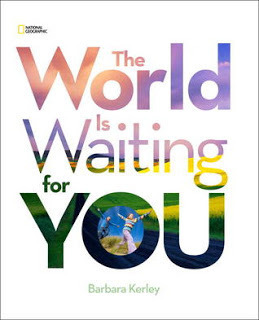 Gorgeous photographs accompany Barb's meditations on how something as simple as splashing in a puddle can plant a seed for a child's career/lifelong passion.
Gorgeous photographs accompany Barb's meditations on how something as simple as splashing in a puddle can plant a seed for a child's career/lifelong passion.
I personally can't wait to read this to my little granddaughter! It will be released on March 12, so ask for it at your local indie bookstore!
Her latest book has rightfully earned a star from Kirkus: "A stirring invitation to leap, dive, soar, plunge and thrill to the natural world’s wonders and glories."
 Gorgeous photographs accompany Barb's meditations on how something as simple as splashing in a puddle can plant a seed for a child's career/lifelong passion.
Gorgeous photographs accompany Barb's meditations on how something as simple as splashing in a puddle can plant a seed for a child's career/lifelong passion.I personally can't wait to read this to my little granddaughter! It will be released on March 12, so ask for it at your local indie bookstore!
Published on March 08, 2013 07:00
March 7, 2013
Thursday's Thought
“I love deadlines. I love the whooshing noise they make as they go by.”
Douglas Adams, The Salmon of Doubt
Douglas Adams, The Salmon of Doubt
Published on March 07, 2013 07:00
March 5, 2013
Teacher Tuesday
What a joy it's been this year, getting acquainted with teachers and librarians across this great country. I shouldn't be surprised by the places this journey has taken me, but I don't think I could've ever guessed this post would be going to the dogs. And it's all thanks to Margie Myers-Culver, a librarian at Charlevoix Elementary and Charlevoix Middle Schools, way up at the tip of Michigan's mitten. Margie works with students in kindergarten through eighth grade and her passion for connecting kids and books hasn't diminished one iota in thirty years.
Let's first take a peek at Margie's past:
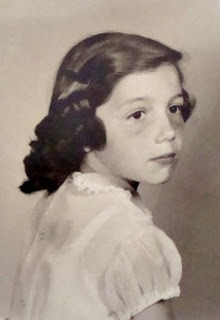
A Peek at Your Past:Favorite school lunch as a kid: Grilled cheese and tomato soupTeacher who inspired you to stretch: Mrs. Peggy Brown, my sixth grade English teacher, demanded the very best from her students. It was old school teaching all the way, but despite her stern exterior I knew deep in her heart she was passionate about her teaching and wanted the very best from and for each of her students. Another teacher I have to mention is my seventh grade advanced math teacher, Mr. William York. We worked very hard every day for him. The reason…he would read aloud if we accomplished all our tasks.
Margie, you’ve been a librarian for more than thirty years – that shows a lot of love and commitment! Thank you for your service. How has technology impacted your library?
Technology is a tool that has expanded our horizons and increased our efficiency. When I think back to the changes in hardware alone, I have to laugh: hand-threaded 16MM projectors versus DVDs. We had to type all the cards for the card catalog (ugh) when I began teaching. When the card kits were made available with each title ordered, it was heavenly. Now, computerized catalogs allow me to download the information into a database in seconds.
What I think we need to remember is that technology should enhance what we already know to be true; not the end but the means. A perfect example of this is the arrival of the Internet (I’m talking when I first used it: text only; no Netscape, Internet Explorer or Google Chrome). A student wanted to use it to find information about the Academy Awards. After 30 minutes the answer had still not been found. Within a matter of minutes a quick look in the World Almanac revealed the answer.
With technology, however, new perspectives and options have been added. We no longer simply do a booktalk; we can choose to show a book trailer too. We don’t just read a book or website for information about an author or an illustrator, we can Skype with them. Although technology builds bridges we still need to find the right resource for the right reader at the right time…and we need to teach them to use it independently.
You mentioned that you’ve worked hard to make the library a “joyful, fun learning experience” for your students. Can you share some examples of how you’ve done that?
First I’ve always tried to make the space appropriately welcoming for whatever age my students might be. Changing bulletin boards monthly with interactive options on them for students, constantly altering book displays on top of shelves, within shelves and on just about every flat surface available, covering the walls with posters that entertain and inform, having a "Xena (my dog) Pick of the Week" book, comfortable seating (large animal shaped pillows) and lighting from lamps other than the overhead lights, are all things I do.
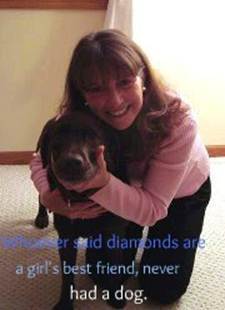 Margie and Xena
Margie and XenaIn one corner of the storytelling area I placed a huge birch tree branch covered with little white lights; additional lighting would be added for holidays. Whenever skills are taught I involve the students actively as much as possible. I have developed numerous learning games to reinforce a specific skill. When I booktalk we almost always play the fiction/nonfiction game where I try to trick them about where a particular book might be shelved. They love to “beat” me. I always begin many book sharing sessions with “tell me what you are reading”. Students speak about a book, others guess fiction or nonfiction or genre. Almost every single visit without fail, no matter the age, ends with a read aloud. Every single year I include a storytelling unit with all grades.
Students also know that their requests for new materials will be honored whenever possible. They need to know this is their library. I may be the overseer, caretaker, manager, acquistioner, cataloger, explorer of the Internet, web 2.0 tool teacher, booktalking and storytelling queen, but I do everything for them. Here is a link to short slide show of my library at the beginning of a school year (2011).
Why is it important for students to have a positive feeling about the library?
Public libraries were initially established to offer free materials for everyone. They represent (or should) equal access to the best reading and information titles being published in print or virtually. It has continually been my goal for my students to be able to walk into any library in any town at any level (school, college, public) and feel comfortable finding what they need for that particular moment. If students do not have a positive feeling about the library how will we building reading communities? How will we make them independent learners?
What are some of the skills students gain when they are taught to use their library effectively?
Students are taught to locate, access, and use what is appropriate for their needs, on the shelves or virtually. This might involve lessons on using OPAC or determining which information online is relevant, reliable and pertinent. I want them to be able to zero in on the best and discard the rest. I adhere to the process as being almost, if not more, important than the product. My students know from my example to constantly question, to dig deeper. New web 2.0 and 3.0 tools are continually coming to my attention through Twitter and blogs I follow. I, in turn, incorporate those into lessons which address library use skills or coincide with projects in their classrooms. Love of reading, also by my example, is a given. We feel the need to read, everything, all the time, anywhere. I love it when I’m in a store shopping, hear a voice ring out—“Hi, Mrs. Culver, see you in the library next week. Guess what I’m reading?”
Can you talk about some of your favorite units to teach, like storytelling?
Nearly thirty years ago I was attending a professional development day featuring a storyteller. From that moment forward I committed to using storytelling as a vehicle to encourage reading in my students; oral telling being the connection to the written word. I became a member of the National Storytelling Network, attending the National Storytelling Festival several different Octobers and several classes offered during the summer in Jonesborough, Tennessee. This gave me confidence to offer it as a separate class to middle school students and later to make it a part of my elementary program as well. Storytelling traditions within other cultures are discussed. Types of stories are introduced. Students listen to a variety of stories and learn to tell over the course of several weeks. It’s amazing to see them open up when given the opportunity.
Can you give an example of some key elements of a successful booktalk?
First and foremost is to know your audience. They need to know you care about them, their interests, their passions. My book talks cover a variety of topics and genres depending on requests from the classroom teacher, the time of year and whether we have recently acquired a new selection of books. (I’ve been known to burst forth about a book I finished the night before as soon as a class walks in, unable to keep in my excitement.) With younger students I might begin with—“I was going through the shelves last night and I found these lonely books. They miss being checked out. Why are they on the shelves? Did you know that…” I provide a mini, mini introduction and a hook for every book. The hook can be a thought, question illustration or my response to reading the book. Sometimes the best hook is the first sentence in the book or another few sentences showing the author’s writing style. You know your booktalk is successful if your listeners want you to continue for a particular book or they want to leap from their seats at the end to check them out or if you have to draw names and make a hold list. You need to be full of enthusiasm for every single book you talk about with your students and they need to know why you feel that way.
Please share that wonderful story about March is Reading Month, something that happened about five years ago.
For me, that was one of many best moments. I love the Iditarod, perhaps because of reading books by Gary Paulsen. For several weeks each year, my students and I read a variety of titles about the history of the race, dogs, and mushing. I’ve designed various research activities altering those acquired from the Iditarod committee itself. PBS Nature has a great activity titled Sled Dogs: An Alaskan Epic. Students work in teams to answer questions on prepared sheets. Teams report back and we discuss the reasons for the specific answers.
One of the activities I had the students do was design the checkpoint sheets to be displayed around the school during the month of March. Each checkpoint on the Iditarod had a spot on the walls going around the entire inside perimeter of the school building. (Paw prints with student names and titles of books read were hung on the walls between the checkpoints.) The students needed to go to the official site of the Iditarod and locate the tab containing information about the checkpoints. They then went to the individual checkpoint. I had them do some math figuring out the number of miles into the race (that is shown now). You could still have students do math by figuring out how many miles are left in the race. They had to list two important pieces of information that made each checkpoint unique. I’ve subscribed to the Iditarod Insider so we can watch the updates during the race as soon as they happen.
But one year, my library lessons stretched out to everyone in the school. If we met our reading goal, an Iditarod musher would come and spend a day with us. It happened! Ed and Tasha Stielstra came with an entire team of dogs. Their presentation was wonderful and top readers got pulled on a sled by a dog team. It is a day I will never forget, a year to remember.
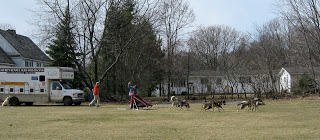
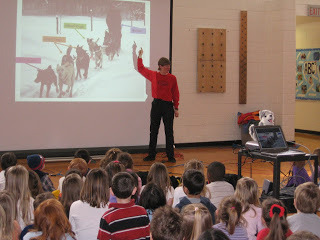
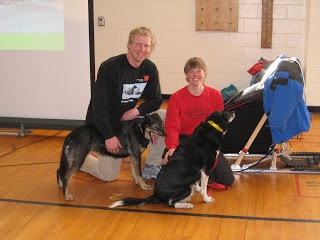
You mentioned that you’ve been told you have the knack for directing a student to just the right book. What kinds of things do you think about when suggesting a title?
Every time I suggest a title, I think about what I know about the particular student. If I know nothing about them, we chat. I ask what they enjoy, what do they do in their spare time. Once you really know your students it’s much easier to find them something to read. Of course, many books are favorites with all students because of the combination of the pictures with the text or because the writing has universal appeal. And I always say, "If you don’t like it, come right back. I have thousands more." There is a right book for every reader.
Can you share an anecdote about a time you really hit a home run with this kind of suggestion?
I can think of two. Several years ago with more massive budget cuts looming on the horizon, working in two buildings K-8 and thinking I was losing my mind, wondering like so many educators do if I was making a difference, I opened my email in the morning to a surprise. One of my former students from another district had tracked me down to thank me for all my help when he was an awkward middle school student; for providing him a welcoming atmosphere and encouragement. I was overwhelmed when I figured out that he must be in his thirties then. I remembered him as being quiet and quite the reader.
Just last year the sister of a twin brother came in late one afternoon and said her mother was thrilled with what I had been able to do for her son. Now for the first time as soon as he finished one book he started another. He’d never been a reader before. He fell in love with reading because I matched him with Gary Paulsen books. Right book for the right reader at the right time; it works wonders.
What a terrific inspiration you are, Margie. Thank you for this great interview. Readers: want more of Margie's great ideas? Check out her blog, Librarian's Quest or follow her on Twitter, @Loveofxena.
Published on March 05, 2013 07:00



